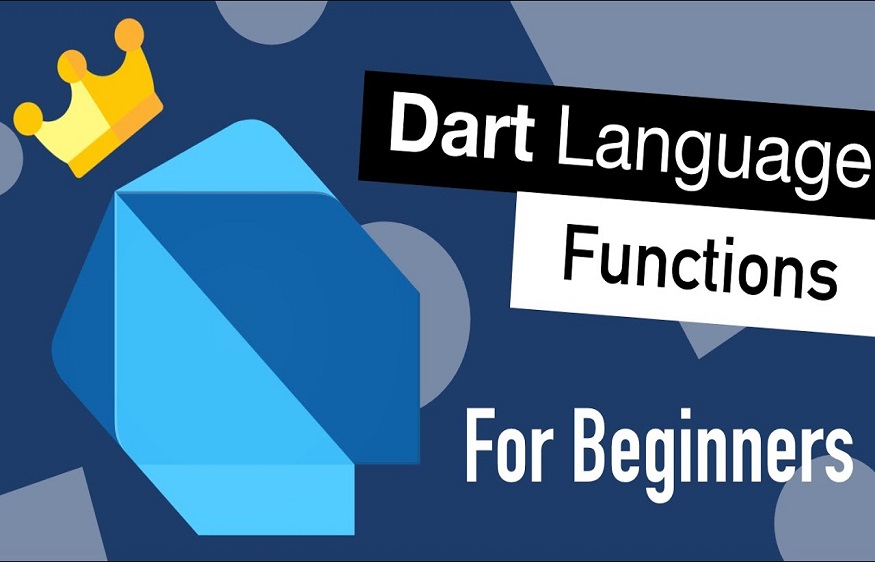Dart programming language: what are the advantages?

There are several options when it comes to programming languages, and deciding which one to use involves many considerations. Choosing the right programming languages is half the problem, some may choose Java, some prefer Python, while others stick to C, depending on what they want the end result to be. In some scenarios, there is some freedom for developers when it comes to programming languages and frameworks.
Dart is one of those programming languages that developers vouch for. In this article, we will discuss Dart, a programming language developed by Google developers in 2011.
What is Dart?
Dart is a high-level interpreted programming language that lets you build mobile, server, desktop, and web applications. Some people even consider it as an alternative solution to JavaScript. Although the first version of Dart was available in mid-autumn, its popularity increased when Flutter (the ideal choice for many for cross-platform development) was released in 2017.
A major difference between Dart and other programming languages is that it comes with its own package manager called Pub; developers can use these packages to build Dart and Flutter apps.
If you’ve heard of Dart, but are still unsure of its main benefits, read on:
1. Easy-to-learn language
Dart is a fairly easy language to learn, and the developers at Google have put a huge effort into the documentation part. With its Java-like syntax, developers with an OOPS background can quickly dive into programming if they know the basics. Dart also allows for easy editing as they can test small sections of code even if the full application is not ready yet. Dart is quite easy to learn, modern, functional, flexible and competitive. The ecosystem is simple, understanding the appropriate terminologies, tools, and SDKs for the language is easy, and accessing frameworks and libraries is easier. If a developer is familiar with any programming language, not just necessarily an object-oriented programming language,
2. Comes with good documentation
Developers find Dart to be a good first programming language to learn because it has a great introduction and very good documentation. Getting started is also easy; Just type in the Dartpad URL and you can get started. More and more people have switched to Dart, thanks to its simple syntax, excellent community support, simple features that guide developers when they are in training.
3. High performance factor
Applications running in Dart run faster than in other programming languages. And features like JIT compilation and AOT compilation add to Dart’s performance functionality. JIT compilation or Just in Time compilation helps you to enable hot reloads while AOT or Ahead of Time compilation provides quick start and better execution of the application.
4. Dart syntax is clean
Dart is almost like Java because its syntax is clean. So developers can easily pick up the code, but they may get confused with many features of the Dart language.
5. Excellent tooling support
The programming language has amazing tools to support application development.
While considering the pros, you should also be aware of the cons, in order to help make a wiser decision.
6. Can compile to standalone snapshots
This feature is possible with other languages, but it’s quick and easy with Dart. Dart scripts can compile themselves into self-contained snapshots, i.e. without requiring other programs or libraries
7. Can write the first program without installation and configuration
Dart comes with DartPad, a very simple interface, eliminating the need for installation or configuration. Just write the code and click Run Command to run the code. There is support for libraries, but it is limited to the basic level.
8. Good support for programmer
Programmers may choose to treat Dart as an ordinary dynamically typed language, especially if they don’t want to deal with type systems at all. Dart is therefore an optionally typed language. Developers can also benefit from the additional documentation provided with type annotations in code. Dart alerts programmers to possible type inconsistencies and oversights, not errors. These alerts are calibrated to support developers.
9. More typed than JavaScript
If you compare Dart with JavaScript, the former has some advantages in some respects. For example, JavaScript is not a type-safe language. It is only during execution that you will see programming errors. On the other hand, Dart supports both hard and loose prototyping, where you can see programming errors while compiling. So it’s more type safe than JS.
10. The dart is portable
No specific hardware configuration or architecture is required to run Dart, as it works on any operating system and in all web browsers.




